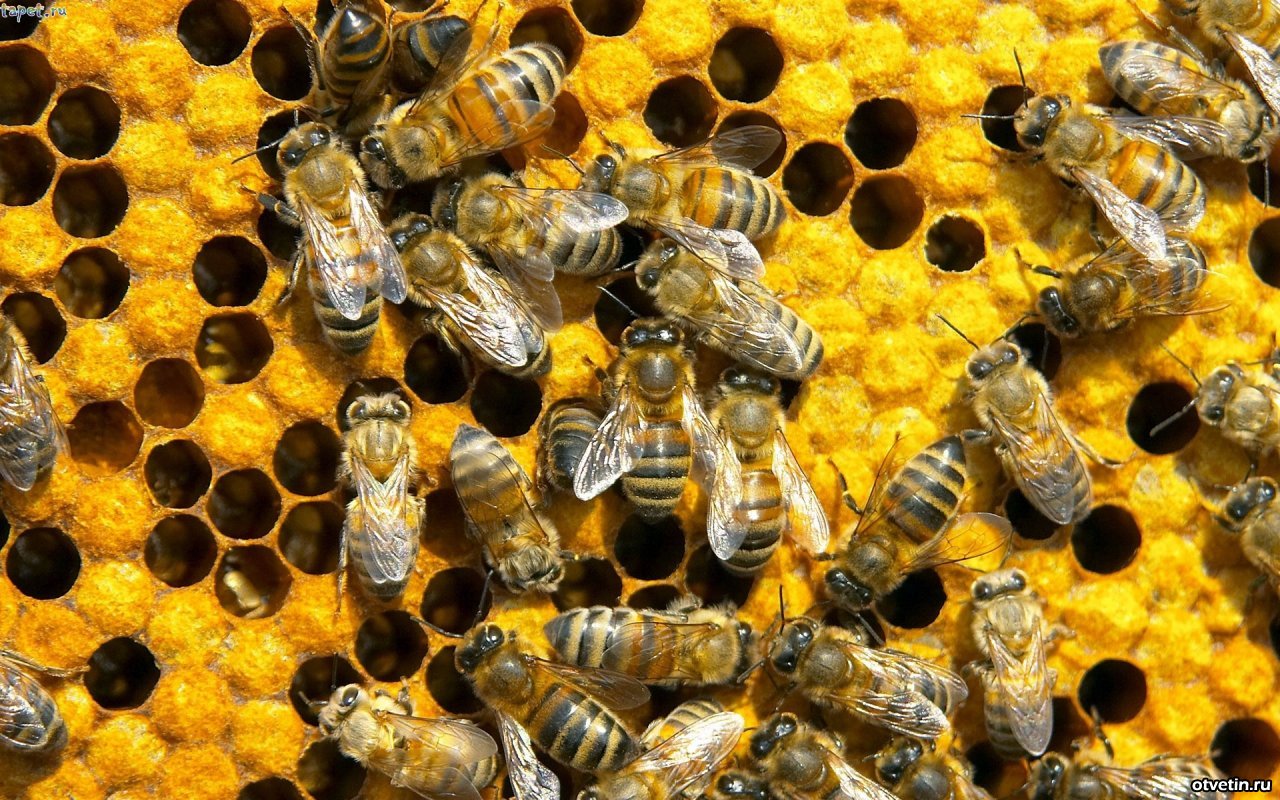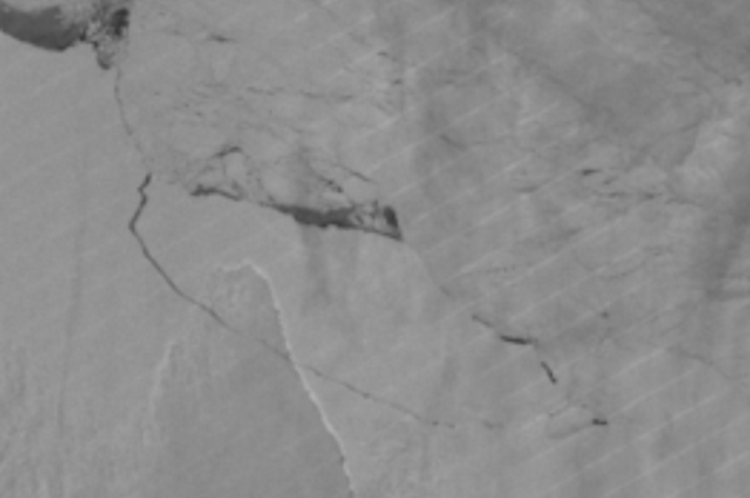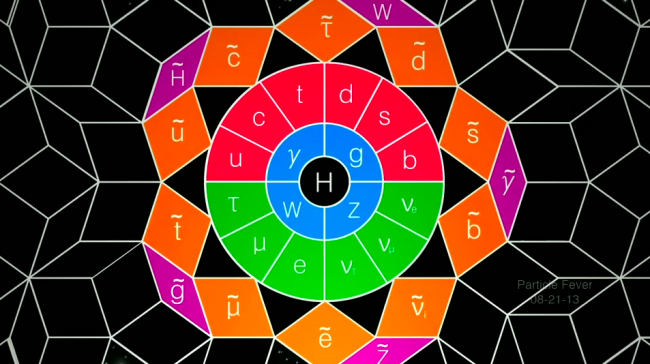10 facts about black holes that everyone should know
 Source:
Source:
Black holes are perhaps the most mysterious objects in the Universe. Unless, of course, somewhere in the depths of the not hiding things, the existence of which we do not know and can not know that is unlikely. Black holes are the enormous mass and density, compressed into a single point with a small radius. The physical properties of these objects are so strange that force you to wrestle with the most experienced physicists and astrophysicists. Sabine Hassinger, a theoretical physicist, made a selection of ten facts about black holes that everyone should know.
What is a black hole?
The Defining property of a black hole is its horizon. This is the boundary breaking which nothing, not even light, can return. If the separated region becomes separated forever, we're talking about "event horizon". If it is only temporarily separated, we are talking about the "visible horizon". But it "temporarily" can also mean that the area will be separated for much longer than the current age of the Universe. If the horizon of a black hole is a temporary but long-lived, the difference between the first and second spreads.
How big are black holes?
You Can imagine the horizon of a black hole as a sphere, and its diameter is directly proportional to the mass of the black hole. Therefore, the more mass falls into a black hole, the more it becomes a black hole. Compared to stellar objects, however, tiny black holes because the mass is compressed into a very small volume under the action of irresistible gravitational pressure. The radius of the black hole mass with the planet Earth, for example, only a few millimeters. This is 10 000 000 000 times smaller than the present radius of the Earth.
The Radius of a black hole is called the Schwarzschild radius, in honor of Karl Schwarzschild, who first brought black holes as a solution to the General theory of relativity.
What's happening on the horizon?
When you cross the horizon around you nothing happens. All because of the Einstein equivalence principle, which implies that it is impossible to tell the difference between acceleration in a flat space and the gravitational field that creates the curvature of space. However, an observer far from the black hole that is watching someone else falling in, you will notice that people will move more and more slowly, approaching the horizon. If time near the event horizon is moving slower than away from the horizon. However, it will take some time, and falling into the hole, the observer will cross the event horizon and will be inside the Schwarzschild radius.
What you are experiencing on the horizon depends on the tidal forces of the gravitational field. Tidal forces on the horizon is inversely proportional to the square of the mass of the black hole. This means that the larger and more massive the black hole, the less power. And if the black hole is massive enough, you can overcome the horizon before will notice that something is happening. The effect of these tidal forces will stretch you: the technical term for this use of physics is called "spaghettification".
In the early days of General relativity it was believed that on the horizon there is a singularity, but it was not.
What's inside a black hole?
No One knows for sure, but definitely not a bookshelf. General relativity predicts that a black hole singularity, the place where tidal forces become infinitely large, and once you cross the event horizon, you can't get anywhere else except at the singularity. Accordingly, the GTR is better not to use these places — it simply does not work. To say what happens inside a black hole, we need a theory of quantum gravity. It is generally accepted that this theory replaces the singularity with something else.
the structure of black holes?
Currently we know of four different ways of forming black holes. We understand the best associated with stellar collapse. A big enough star to form a black hole after its nuclear fusion stops, because all that can already be synthesized, was synthesized. When the pressure created by the synthesis is terminated, the substance begins to fall to its own centre of gravity, becoming more dense. In the end, it is so compacted that nothing can overcome the gravitational effect on the stellar surface: this is a black hole. These black holes are called "black holes solar mass" and are the most common.
The Following common type of black holes are "supermassive black holes", which can be found in the centers of many galaxies and have masses about a billion times more than black holes of solar mass. While it is not known how they are formed. It is believed that they began as a black hole of solar mass, which in the densely populated galactic centers have absorbed a lot of other stars and grew. However, they seem to absorb material faster, what is this simple idea, and exactly how they do it — is still the subject of research.
A More controversial idea became the primary black holes, which could be formed in almost any ground in the large density fluctuations in the early Universe. Although possible, it is difficult to find the model that produces them, without creating an excessive number of them.
Finally, there is a very speculative idea that the Large hadron Collider might form tiny black holes with masses close to the mass of the Higgs boson. This only works if our Universe has additional dimensions. While there was no evidence in favor of this theory.
How do we know black holes exist?
We Have lots of observational evidence for the existence of compact objects with large masses, which do not emit light. These objects present themselves in the gravitational pull of, for example, due to the motion of other stars or gas clouds around them. They also create gravitational lensing. We know that these objects have no solid surface. This follows from the observation, because the substance, falling on the object surface, must cause the emission of a larger number of particles than the substance falling through the horizon.
Why, last year, Hawking said that black holes don't exist?
It meant that black holes are not eternal event horizon, but only a temporary apparent horizon (see first paragraph). In a strict sense, only the event horizon of the considered black hole.
How black holes emit radiation?
Black holes emit radiation due to quantum effects. It is important to note that quantum effects of matter, not quantum effects of gravity. Dynamic space-time collapsing of a black hole changes the very definition of a particle. Like time is distorted near a black hole, the concept of particles is too dependent on the observer. In particular, when the observer falling into the black hole, thinks falling in a vacuum, an observer far from the black hole thinks it's not vacuum, but full particle space. It is the stretching of space-time causes this effect.
First discovered by Stephen Hawking, the black hole emitted radiation is called "Hawking radiation". This radiation has a temperature, is inversely proportional to the mass of the black hole: the smaller the black hole, the higher the temperature. From stellar and supermassive black holes that we know the temperature significantly below the temperature of the microwave background and so is not observed.
What is the information paradox?
The Paradox of information loss due to Hawking radiation. This radiation is purely thermal, that is by accident and of certain properties is only temperature. Radiation itself does not contain any information about the formed black hole. But when the black hole emits radiation, it loses mass and contracts. All this is totally independent from the substance, which became part of the black hole or from which it was formed. It turns out, knowing only the final state of evaporation is not to say, of what formed the black hole. This process is "irreversible" — and the snag is that in quantum mechanics there is no such process.
It turns Out that the evaporation of black holes are incompatible with quantum theory, known to us, and we need to do something. Somehow to reconcile the. Most physicists believe that the decision is that the Hawking radiation must somehow contain information.
Which Hawking offers for solving the information paradox of a black hole?
The Idea is that black holes should be a way to store information, which is still not accepted. Information stored on the horizon of a black hole and may cause the tiny displacement of particles in the Hawking radiation. These tiny offsets can be information about ingested material. The exact details of this process are currently undefined. Scientists are waiting for more detailed technical paper from Stephen Hawking, Malcolm Perry and Andrew Strominger. They say he will appear at the end of September.
At the moment we are sure black holes exist, we know where they are, how formed and what it will become in the end. But the details of what happens to the incoming information, still represent one of the biggest mysteries of the Universe.
...Recommended
What will be the shelter for the first Martian colonists?
Mars is not the friendliest planet for humans While the Red Planet is roaming rovers, researchers are pondering the construction of shelters and materials needed by future Martian colonists. The authors of the new paper suggest that we could use one ...
New proof of string theory discovered
Just a few years ago, it seemed that string theory was the new theory of everything. But today the string universe raises more questions than answers String theory is designed to combine all our knowledge of the Universe and explain it. When she appe...
What is the four-dimensional space?
Modeling camera motion in four-dimensional space. View the world in different dimensions changes the way we perceive everything around, including time and space. Think about the difference between two dimensions and three dimensions is easy, but what...
Related News
Scientists from St. Petersburg have created the unsinkable metal
As the press service of the St. Petersburg Polytechnic University Peter the Great scientists of this institution have managed to develop and patent technology for the production of porous metal-based aluminum alloy. Due to the unu...
10 things that will disappear forever if the bees disappear
Save the bees! Worldwide campaigns in support of these small furry and invisible workers. Threats, warning the disappearance of the bees, are becoming more and more frequent. You are not even aware how big the impact bees have on ...
Created polyethylene, is able to quickly decompose and not pollute the nature
Almost every day we use plastic bags. Did you know that without due process of recycling the usual thin plastic bags that we give out dozens of stores, decomposed from 100 to 200 years, depending on the composition of the material...
From Antarctica broke off a piece with a mass of 1 trillion tons
In the photo above don't say it, but there is no mistake. From Antarctica just broke off one of the largest ever recorded iceberg, half the size of the area of the island of Jamaica. The cause was a crack appeared in the ice shelf...
Russian scientists have developed a technology for the production of transparent aluminum
according to the publication IOP Conference Series: Materials Science and Engineering, a group of Russian specialists from National research nuclear University MEPhI, together with colleagues from Moscow state University of geodes...
10 impossible things made possible by modern physics
In the wonderful world of physics impossible, at least not right away, but still is possible. But lately scientists have managed to achieve really superawesome things. Science progresses. Only one spaghetti monster knows what else...
The water was divided into two different liquids
We used to think that liquid water is a disordered collection of molecules that move rapidly within some structure. But scientists from Stockholm University have discovered two phases of this liquid with large differences in struc...
The General theory of relativity: four steps taken by the genius
the Revolutionary physicist used his imagination, not complex math to come up with their most famous and elegant equation. The General theory of relativity is known that foretells a strange but true phenomena, like the aging astro...
A device for remote charging and destroying drones
of Course, one can say, «narrow» today's drones is battery life, not allowing aircraft to spend long hours in the air. Of course, there are high-capacity batteries, solar panels and other surveys. But where a more elegan...
Why have dreams? Top ten theories
Dreams, reminiscent of watching TV shows in a drunken state, dreams of almost everyone, but no one knows why. Dreams are dreams, not every time we sleep and when we sleep, usually it's a random script, which made no sense. Sometim...
Scientists first got the "liquid light" at normal temperature
Physics for the first time in history got a "liquid light" at room temperature, making this unusual form of matter is more accessible than ever. It is a mixture of a superfluid, with no friction and viscosity, and some kind of con...
Created a protective fabric that can neutralize chemical weapons
Chemical weapons is one of the most dangerous weapons of mass destruction. And if at the beginning of the development of chemical weapons struck the man through the respiratory tract, the modern specimens are able to penetrate eve...
Recipe of dark matter can include a supercritical fluid
through years of research, it became clear that dark matter behaves abominably. This term was introduced about 80 years ago by astronomer Fritz Zwicky who realized that in order to prevent individual galaxies to escape in a gigant...
How much in the Universe of black holes?
for the third time In history, we directly black holes: gravitational waves, resulting from the merger. In combination with what we already know about the stellar orbits near the galactic center, x-ray and radio observations of ot...
Strange habits of albert Einstein: what can we learn from genius?
the Famous inventor and physicist Nikola Tesla was often flexed toes. Every night he repeatedly "squeezed" fingers 100 times on each foot, according to writer Mark Cypher. Although it is not clear that even included his exercise, ...
Physicists have found a possible breach in the Standard model
Physicists from the University of California at Santa Barbara have discovered a phenomenon that can not fail under any fundamental assumption, which adheres to the Standard model of physics. This conclusion was made after scientis...
Artificial intelligence to learn to recognize speech among noise
Virtual assistants and voice recognition fairly well learned «to know» what they person says, and follow his commands. But for this to work the same for Siri and Cortana, background noise can become a big problem. To cop...
Scientists have approached the creation of units for artificial photosynthesis
Oxygen is the basis of life of all creatures on our planet. And there he was, as we know from school biology course, in the process of photosynthesis taking place in leaves and stems of plants. Scientists with varying degrees of s...
Created the first two-dimensional magnet with a thickness of one atom
according to the editors of the journal Nature, a group of scientists from the University of Washington managed to get a connection on the basis of chromium and iodine. The structure of the compound is something of a counterpart o...
What it's like on the edge of the Universe?
There is a threshold beyond which we cannot go, there are things we will never know. But one thing we do know, and we have powerful tools: science, imagination, analysis. 13.8 billion years ago the universe as we know it, was born...









































Comments (0)
This article has no comment, be the first!